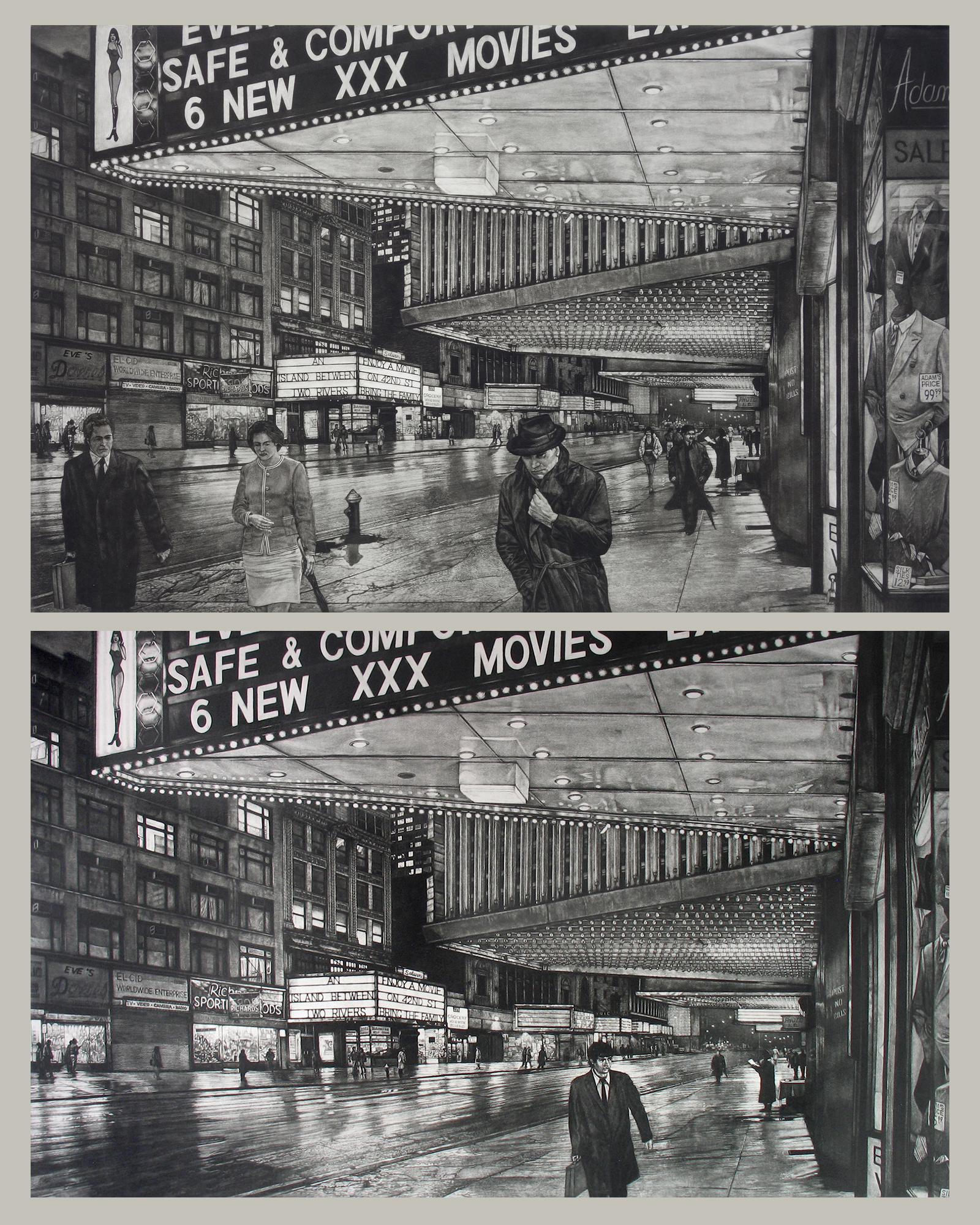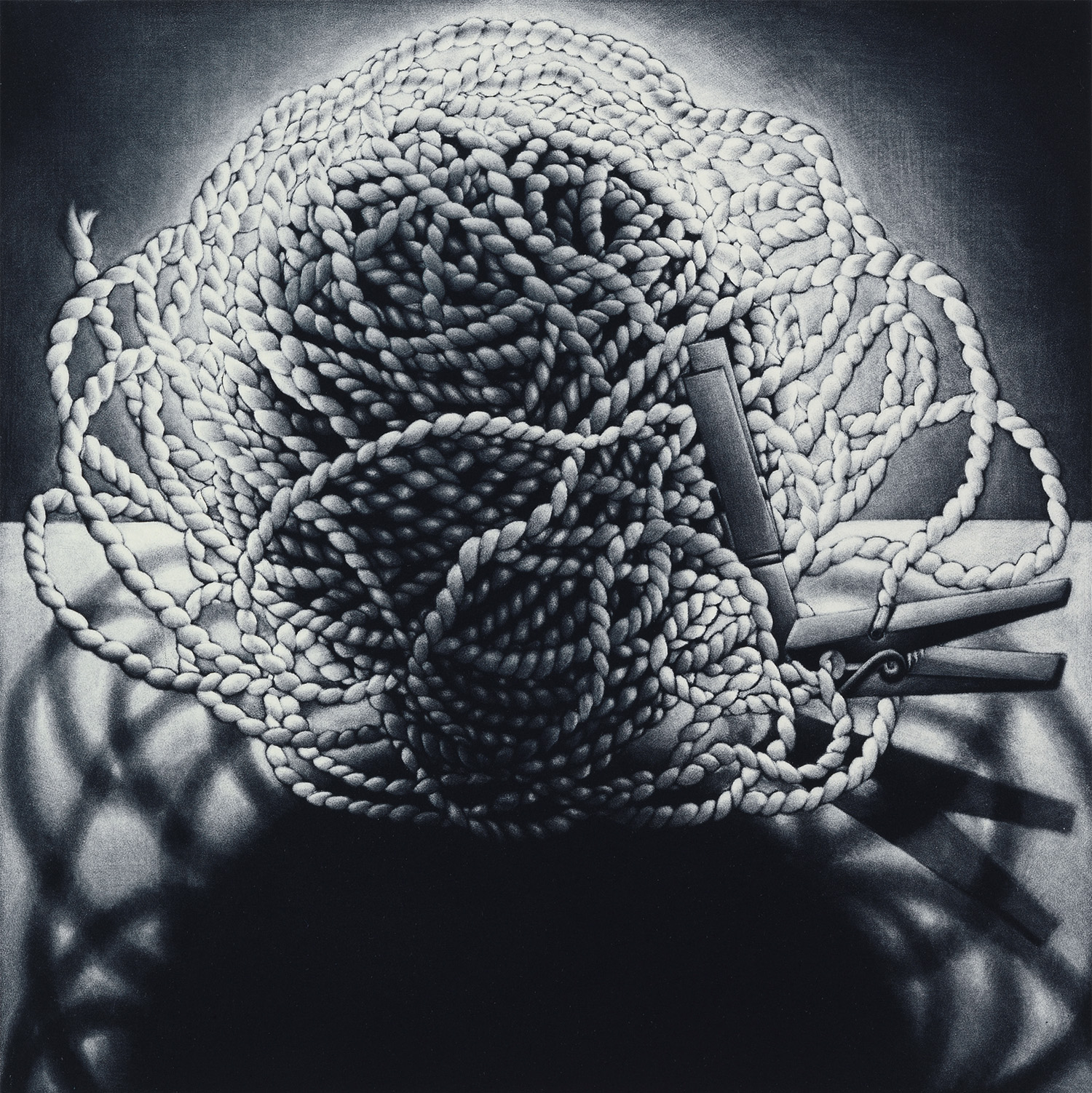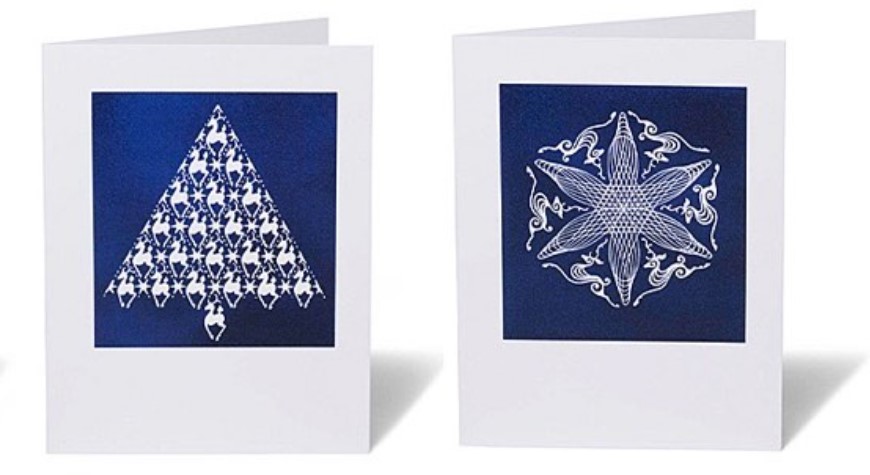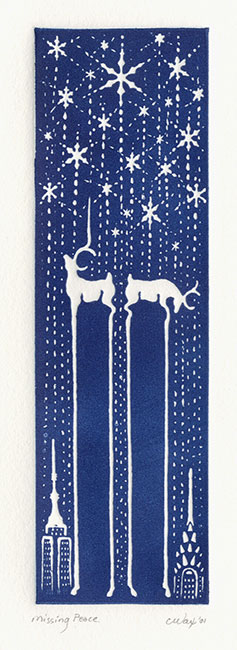Mar 26, 2024
In s3e53 of Platemark, hosts Ann Shafer and Tru Ludwig conclude their conversation with Carol Wax, artist and author of The Mezzotint: History and Technique. Carol recently published the second edition of The Mezzotint, expanding greatly in every area from the 1990 first edition. As she tells us, there is a better break down of rocking the copper plates, and of inking and printing them, plus there are new chapters about printing papers and the history of the medium and how it fits in the greater history of prints.
They talk about the early history of mezzotint, whether one can over rock a plate, what happens when you do, and about Carol’s dislike of perspectival composition, all the machines and their personalities, and her dogs Cecil, the Weimaraner, and Delia, the new dog in her life. The conversation ran long, so the episode is split into two parts.
Carol Wax (American, born 1953). Singer I, 1984.
Mezzotint. 11 ½ x 8 in. Courtesy of the artist. This was a
beautiful tensile piece of copper (ground exact same way as
Singer II, but totally different experience and different
result).
Carol Wax (American, born 1953). Singer II, 1985.
Mezzotint. 14 ½ x 7 3/4 in. Courtesy of the artist. This was a
brittle copper – two of several state proofs illustrating process
of solving technical problem and the finished state. This process
led directly to historical research that resulted in my writing
The Mezzotint: History and Technique.
John Martin (British, 1789–1854). Belshazzar’s Feast,
1826. Mezzotint. Plate: 23 ½ x 32 in. Metropolitan Museum of Art,
New York. Martin’s large plate was printed with up to eight
different inks to enhance the tonal range and compensate for the
peculiarities of mezzotints engraved on steel.
Richard Earlom (British, 1743–1822), after Frans Snyder (Flemish,
1579–1657). A Game Market, 1783. Mezzotint and etching.
Plate: 16 ½ x 22 ¾ in. New York Public Library, New York.
Richard Earlom (British, 1743–1822), after Jan van Huysum (Dutch,
1682–1749). A Flower Piece, 1778. Etching (early state
before mezzotint). Plate: 558 x 420 mm. (21 15/16 x 16 9/16 in.).
Yale Center for British Art, New Haven.
[Right] Richard Earlom (British, 1743–1822), after Jan van Huysum
(Dutch, 1682–1749). A Flower Piece, 1778. Mezzotint and
etching. Plate: 558 x 420 mm. (21 15/16 x 16 9/16 in.). Baltimore
Museum of Art, Baltimore.
J.M.W. Turner (British, 1775–1851) and Charles Turner (British,
1774–1857). Scene from the French Coast (Liber Studiorum, plate
4), 1807. Etching and mezzotint. Plate: 20.9 x 29.1 cm. (8 ¼ x
11 7/16 in.). Art Institute of Chicago, Chicago.
[DETAIL] J.M.W. Turner (British, 1775–1851) and Charles Turner (British, 1774–1857). Scene from the French Coast (Liber Studiorum, plate 4), 1807. Etching and mezzotint. Plate: 20.9 x 29.1 cm. (8 ¼ x 11 7/16 in.). Art Institute of Chicago, Chicago.
Thomas Goff Lupton (British, 1791–1873), after Thomas Girtin
(British, 1775–1802). Chelsea Reach, Looking toward
Battersea, from the series Gems of Art, 1825.
Mezzotint and engraving. Sheet: 260 x 341 mm. (10 1/4 x 13 7/16
in.); plate: 168 x 252 mm. (6 5/8 x 9 15/16 in.). Baltimore Museum
of Art, Baltimore.
Carol Wax (American, born 1953). The Old Clothesline,
1983. Mezzotint. 11 x 11 in. Courtesy of the artist.
Carol Wax (American, born 1953). Fanfare, 1983. Mezzotint.
16 x 11 in. Courtesy of the artist. This was the first image I did
with a mechanical subject and the first time I subtracted so much
of the background.
Carol Wax (American, born 1953). Singer I, 1984.
Mezzotint. 11 ½ x 8 in. Courtesy of the artist. This was a
beautiful tensile piece of copper (ground exact same way as
Singer II, but totally different experience and different
result).
Carol Wax (American, born 1953). Under Wraps, 2008.
Mezzotint. 16 x 20 in. Courtesy of the artist. One of many images
of animate/inanimate objects. This series turns the table and uses
fabric to objectify a living subject. This project is also an
example of how different grounds can be used creatively: the plate
was ground with an 85-gauge rocker, but the dog parts were scraped
down and reground with a 120-gauge roulette to differentiate
textures between fabric and fur. The whiskers were engraved with a
burin.
Carol’s wall of inspiration.
[Left] Carol Wax (American, born 1953). Remington
Noiseless, 1986. Mezzotint. 20 x 16 in. Courtesy of the
artist. Remington Noiseless illustrates stylized shadows
before working for Philip Pearlstein.
[Right] Carol Wax (American, born 1953). Remington Return, 1993. Mezzotint. 18 ½ x 24 1/2 in. Courtesy of the artist. Reflects Pearlstein’s influence as well as more sophisticated technique and confidence acquired while writing the book.
Carol Wax (American, born 1953). Glad Tidings, 1993. Two
relief intaglio holiday cards. Each: 3 x 2 9/10 in. Courtesy of the
artist.
Carol Wax (American, born 1953). Missing Peace, 2001.
Relief intaglio. 5 x 1 1/2 in. Courtesy of the artist.
Carol Wax (American, born 1953). Fortune’s Fool, 2020.
Gouache. 8 ¼ x 9 1/4 inches. Courtesy of the artist. This
clown puppet represents Trump, seen here being devoured for lunch
by the Chinese, and while he thinks he’s sticking it to their butt
(the pencil sharpener from Chinatown), he’s only sharpening their
strategies.
Carol Wax (American, born 1953). Butterfly Effect, 2018. Gouache. 22 x 14 in. Courtesy of the artist. The pulley is a commentary on our convoluted election system that is subject to all kinds of whims.
Carol Wax (American, born 1953). Rigged, 2018. Gouache. 20 x 24 in. Courtesy of the artist. This image is about how the system is rigged.
Carol Wax (American, born 1953). Underhanded, 2020. Gouache. 21 x 14 in. Courtesy of the artist. This image is about a few things (manipulation, power, etc.), but think “George Floyd.” The political undertones of my paintings have found their way into recent mezzotints.

USEFUL LINKS
Carol’s website https://www.carolwax.com/
Jennifer Melby’s link https://www.jennifermelby.com/
Conrad Graeber’s link https://conradgraeber.com/

















